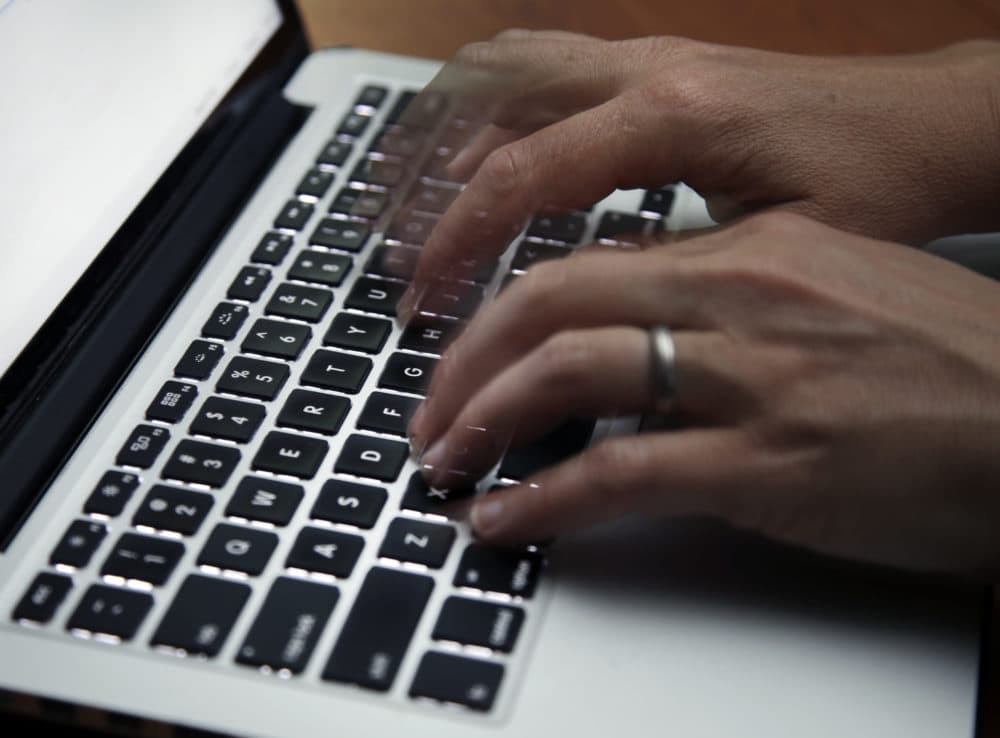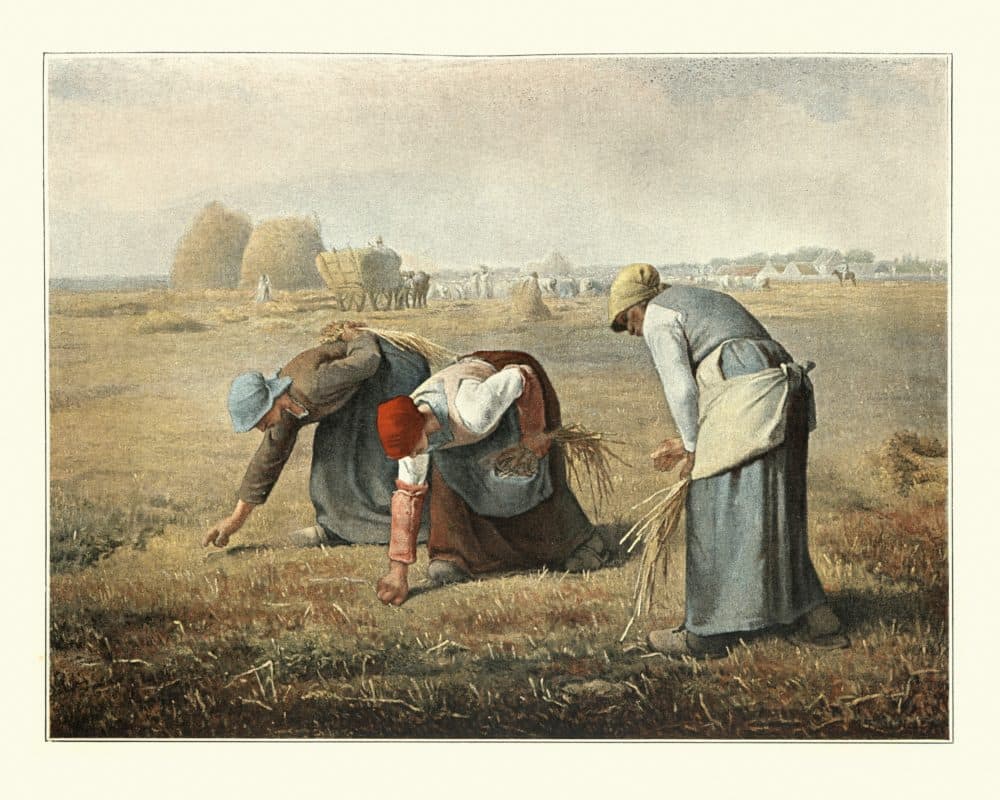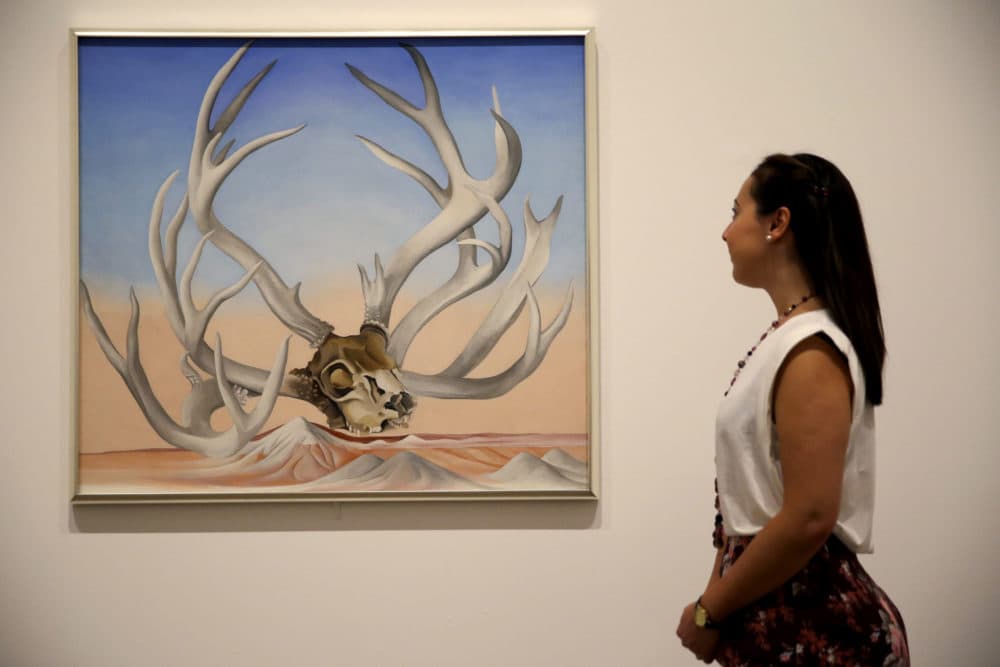Advertisement
Frontline Workers Process A Year Of Trauma Through Writing

Over the last year, Maryland psychotherapist Kerry Malawista noticed frontline health care workers struggling with what she called "the ghosts of the COVID deaths they carry."
Borrowing the expression from Tim O’Brien’s collection of Vietnam War-era stories, she started The Things They Carry Project, a series of writing workshops for health care workers and first responders. Each session is guided by a known writer and a therapist, who together help doctors, nurses and hospital domestic workers understand it's OK to lay down their burdening thoughts.
Some of Malawista’s patients work on the front lines of the pandemic in intensive care units and emergency rooms.
“It was at the year anniversary of the pandemic in March that the grief really was starting to hit them,” she says. “It was like things were finally slowing down. And I was hearing just the pain they were feeling.”
She recommended that one doctor write down the feelings he struggled to find words for. The doctor said the exercise helped him and continued to write, sparking the idea to start the program.
Maine emergency physician Michael Schmitz understands the struggle of providing care during the pandemic. Many people believe the stereotype that doctors, especially in the emergency room, don’t feel the impact of their experiences at work, he says.
“And of course, the opposite is very much true,” he says. “All those experiences are still with you.”
Schmitz carries the weight of how personal protective equipment disrupted the way he communicates with patients by concealing his facial expression, especially when meeting someone for the first time.
At work, he saw elderly patients on a daily basis who couldn’t communicate with their families because of COVID-19 restrictions. He struggled the most with giving families the news that their loved one — who they couldn’t come to see in the hospital — had COVID-19 on Christmas.
And outside of the ER, frontline workers needed to take care of their families, help kids adjust to remote learning and cope with people posting that COVID-19 isn’t real on social media, he says.
Advertisement
“It's just a weight of those experiences,” he says. “I wouldn't call it grief in my particular case. I would just say there was a weight and this program made a space to put it down.”
And Malawista knows a thing or two about carrying a weight. Her daughter, Sarah, died at age 18.

An artist, Sarah taught her mother about foreground, background and something called the middle distance by looking at Jean Francois Millet’s oil painting "The Gleaners.” Her daughter explained that the middle distance gives the painting balance and perspective.
In Georgia O'Keeffe’s painting “From the Faraway, Nearby,” an elk skull with huge antlers dominates the canvas atop a faraway mountain — with no middle distance. The painting helped Malawista realize people need a middle distance in their lives, too.
People often can’t see past overwhelming trauma and grief while they’re experiencing it, she says, or sometimes feel distant and deny the effect of the loss.
“I came to think how we really need a middle distance to bridge those two worlds in order to go on and live a good, full and creative life, one that both includes the loss and the grief,” she says. “We can't get rid of that completely, but also can see a distance where we might be OK and carry the loved one with us.”
For both Malawista and Schmitz alike, writing helps facilitate healing.
Shifting between the up close, the far away and the middle distance can help health care workers take care of patients while processing the feelings that come with the job, Schmitz says.

Through the program, Schmitz wrote a poem called “3-M Mask” about the masks he wears at work every day. Writing the poem gave him a sense of release.
“The thing that was the most helpful was that other people also talked about how these boundaries around COVID — whether it was a computer screen because they were doing mental health support for people or wearing PPE — how that affected their ability to care for other people,” he says. “And they had many of the same fears and frustrations.”
Malawista says the program attracts a wide range of people, from firefighters to people organizing burials to doctors, who all share their own grief.
“I think at first people are numb, sort of like soldiers going through one foot in front of the other and you have no option,” she says. “And then suddenly, like I saw in March, when you can slow down, that's when you start to feel.”
Now as the country continues reopening and a sense of normalcy returns for many Americans, there’s one thing Schmitz wants to hear from people.
“The most powerful thing that people have said is just thank you,” he says. “Those are the words that go in the little bank that you hold in the center of your chest and that get you through the more difficult times.”
And gratitude is something Schmitz feels toward Malawista for starting the writing program and connecting him with others who are willing to confront difficult feelings during a difficult time.
Karyn Miller-Medzon produced and edited this interview for broadcast with Todd Mundt. Allison Hagan adapted it for the web.
3-M Mask
An excerpt from writing by workshop participant Michael Schmitz
Green
Thick with microfilaments
Cupping my nose and mouth
Not quite smothering
Hopefully protecting
Muffling not just my words,
But my timing, cadence, patience and smile
Forcing inhalation and exhalation
Through the conscious work of breathing
Counteracted only by my gloved hand
Resting upon a naked forearm
A meager attempt to make up the chasm
In the boundaries of our communication
Trying to say:
“I’ve got you”
and
“It’s going to be okay”
Butterfly Man
An excerpt from writing by workshop participant Susan Perron
“This is scaring me,” I told my Nurse Practitioner, as I continued to turn up my patient’s sedation, steadily climbing past the pump’s guardrails. “Is this safe?” I whispered to myself, hands trembling.
My NP looked back at me through the patient’s door and replied over my respirator’s walkie, “Yes, this is scary. We are in uncharted territory; there is no instruction manual for this.” Fentanyl, Propofol, Dilaudid, and Nimbex, all reaching maximum dosages as I continued to titrate up. I looked at my patient, strapped to ECMO, trached, vented, hooked to countless wires monitoring their vital signs, while all wrapped in a warming blanket. And, not just any ECMO patient, but one who needed a double or “butterfly” ECMO circuit, that graced their body like wings, to keep them alive.
In street speak ECMO, (extracorporeal membrane oxygenation), is a device that can bypass blood going to the lungs and send it into a machine that gives the blood oxygen then sending it back into a major artery to circulate around the body. The hope is that this will either help bridge to a lung transplant or give their lungs time to heal. It’s usually a grim prognosis by the time a COVID patient ends up on ECMO and grimmer if it’s two. A simple turn or cough could cause your patient’s oxygen levels to plummet and there was no guarantee that that their oxygen levels would recover no matter what medical miracle we performed. “Hell”, I thought, “just looking at them could cause them to code.”
I could feel the droplets of perspiration run down my back. My green scrubs were drenched under the protected layers of blue plastics shielding me from the virus. Everything just stuck to me. The cool air from my respirator, my saving grace, fanned my sweaty face. COVID is such a heart breaking disease. Even if your patient beats COVID their lungs may never recover causing their ultimate demise. Working in a place like the COVID ICU will test you mentally, physical and spiritually on a daily basis. This case was no exception.
My charge nurse knocked on my window. Patient’s spouse is on the phone for an update. They live almost 3 hours away and are now the sole caregiver for their children.
“What do I say? How do I tell someone their loved one is not doing well? How do I avoid giving them false hope?” I thought. I tell them the truth; I keep to the facts. I summarize my assessment, changes in ECMO settings, drip rates, recent labs, and goals for the evening. Sometimes my only goal is to keep them stable until next shift. It's grim. Then I hear her sweet voice over the receiver telling me that God is looking out for us and she has all faith in my abilities as a nurse. “I’m glad someone does,” I think to myself, as I fight back the urge to cry.
I get off the phone and doubt creeps in. “What am I doing here?” I ask myself, “Am I enough? What have I gotten myself into? Am I really helping people? Am I really making a difference?” After my shifts in the COVID ICU, I leave with the sick feeling of defeat. It’s hard when you see so many of your patients die. You start guessing your every action, decision and intervention. I began doubting my convocation that lead me to become a nurse. I call this phenomenon the silent killer of healthcare careers.
I look around and stare at all the handmade drawings, get well cards and family pictures adorning my patient’s walls, a reminder that cocooned within in this nest of wires and medical equipment is a well loved human being. Praying, I snapped out of my funk and spring back into action telling my doubts, “WE are not doing this tonight.” For the rest of the shift I focus on here and now. I focus what I can do for my patient in this moment.
As 7 am approaches, the day shift fresh from their showers and night sleep, shuffle in to get report. My patient is still alive, sedated and relatively stable. I consider this a win in my book. I did the best I could, I told myself. The rest is in God’s hands. As I leave the COVID ICU I try not to look back at my patient as it is often last time I will ever see them alive. It’s too painful. I make it out to the parking garage and climb in my Corolla. Jeff Buckley’s, Hallelujah, plays over the radio. I sigh; exhausted, I kick back my seat and close my eyes for five short minutes.
Weeks passed. I try not to think of my previous patients. Just neatly compartmentalize my work life so I can carry on. Often times, I have no idea what happens to my patients once they leave my care. As an ICU nurse, that is one of the luxuries I have. On this particular day it was my turn to cycle back into the “normal” Medical ICU giving me a much needed break from COVID. As I passed by the charge nurse’s desk to get my assignment, I peered into a nearby room. Looking back at me was my Butterfly Man. He waved. I smiled ear to ear.
This segment aired on June 9, 2021.

